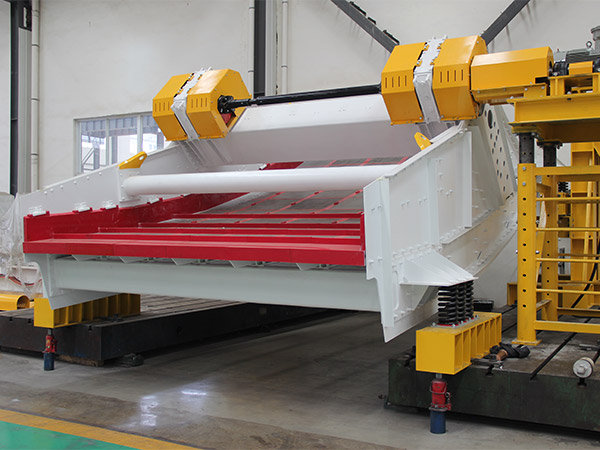What is a vibrating screen vibrator?
A vibrating screen vibrator, also known simply as a vibrator or vibrating motor, is an essential component of a vibrating screen. Vibrating screens are used in various industries for separating and sizing aggregates, minerals, and other granular materials based on particle size. The vibrating screen vibrator is responsible for generating the vibratory motion that facilitates the screening process.
Introduction to vibrating screen vibrator

1. Types of Vibrators
Electric Vibrators: These are the most common types of vibrating screen vibrators. They are powered by electric motors and are versatile, providing adjustable vibration intensity.
Pneumatic Vibrators: Powered by compressed air, pneumatic vibrators are suitable for applications where electric power may not be readily available or in hazardous environments.
Hydraulic Vibrators: Driven by hydraulic power, these vibrators are often used in heavy-duty applications and can provide high force.
2. Key Components
Motor: The core component of the vibrator is an electric, pneumatic, or hydraulic motor that generates the rotational force required for vibration.
Eccentric Weights: In many vibrating screen vibrators, eccentric weights are attached to the motor’s shaft. The rotation of these weights creates a centrifugal force, resulting in vibratory motion.
Housing: The motor and eccentric weights are housed in a protective casing designed to withstand the forces generated during operation.

3. Adjustability
Vibrators are often designed to be adjustable to control the amplitude (intensity) of the vibration. This adjustability allows operators to optimize the screening process for different materials and operating conditions.
4. Mounting
Vibrators are typically mounted to the vibrating screen structure. The mounting method may vary depending on the design of the screen, but common methods include side-mounted vibrators or vibrators mounted at the screen’s center.
5. Maintenance
Regular maintenance is essential to ensure the efficient operation of the vibrating screen vibrator. This may include lubrication of bearings, inspection of eccentric weights, and checking for any signs of wear or damage.

6. Operation
When activated, the vibrator imparts vibratory motion to the screen, causing the material on the screen deck to move and separate based on particle size. The frequency and amplitude of the vibration influence the efficiency of the screening process.
7. Application Areas
Vibrating screen vibrators are used in a wide range of industries, including mining, aggregate production, construction, recycling, and more.
8. Safety Considerations
Operators should follow safety guidelines and precautions when working with vibrating screen vibrators to prevent injuries and ensure proper operation.
9. Customization
Vibrating screen vibrators can be customized based on specific application requirements, including the type of material being screened and the desired screening efficiency.
It’s important to note that the specific design and features of vibrating screen vibrators may vary among manufacturers and models. When selecting or maintaining a vibrating screen vibrator, referring to the manufacturer’s guidelines and recommendations is crucial for optimal performance and longevity.



